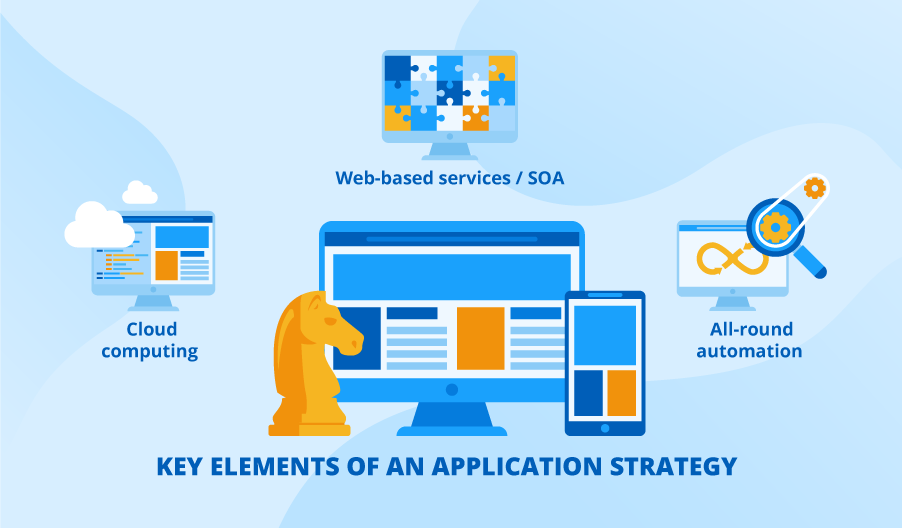Must-Haves of the Application Strategy in 2025
Editor’s note: Paul shares some useful tips on the use of the core elements of the modern enterprise application strategy. And if you are interested in deeper involvement of a professional tech consulting and implementation partner, study ScienceSoft’s offer in application services.
Nowadays, companies experience pressure for operational efficiency and fast adaptability to changing business and customer demands. A pragmatic enterprise application strategy, including technologies and approaches to application development, deployment and management, can help rise to the challenge. Read on to find out what key elements a modern application strategy includes.

Cloud computing
Cloud: the essence
Adopting the cloud is a top investment priority for more than a third of modern companies. The reason is that cloud services are provisioned on demand, automatically scale the capacity up and down and are billed in a flexible pay-as-you-go mode (for example, by the quantity of resources consumed).
Cloud computing benefits
Providing that a business employs optimal cloud services and builds or re-builds app architectures in the appropriate way, they can expect the following benefits:
- Minimize or eliminate resources needed to support and maintain in-house hardware and infrastructure.
- Reduce software development efforts.
- Reduce the time required to develop, test, and deploy apps.
- Reduce time and costs to upgrade software.
- Allocate cloud resources to specific services or processes based on fluctuating demand.
- Automate most of IT operations processes, thus allowing an IT team to focus on supporting strategic business initiatives.
Web-based services / SOA
Service-based architecture: the essence
I recommend you to choose a services-based approach to your application architecture and consider migration of your legacy monolith applications to modular architectures. SOA / microservices architecture involves building or re-building an application as a set of small, independently deployable components, each focusing on a single business function.
Benefits of services
Here’re the major gains of such architectures.
- Easier service enhancements, which helps react to changing business needs faster. For example, ScienceSoft helped a company from the travel and hospitality industry transform its online booking platform into a set of web-based services. As a result, the company obtained a possibility to quickly extend the platform’s functionality and introduce integrations, and confidently sustained high user satisfaction scores.
- Unification of overlapping functionality into more efficient shared services.
- Independent scaling of services. Check a good example of such scaling in our recent article on microservices.
All-round automation
Another important element of your application strategy is the introduction of automation on all stages of the application life cycle. Application development, releasing, deployment, testing, configuration, management and monitoring are to be automated to the max. Some of the key tools and processes of automation are:
- Test automation. Test automation means standardization of test planning, design, development and automation of test execution. The approach allows for achieving high software quality while supporting frequent releases and keeping the testing process cost-effective. If you want to learn more about test automation and its benefits, check our recent article.
- DevOps. The DevOps approach and its practices, like continuous integration and delivery (CI/CD), provide for more frequent and reliable software releases through automated coordination of the development, testing and production environments.
Leverage an efficient application strategy
While bringing impressive improvements, the core initiatives of any modern application strategy are also quite challenging and risky. Their successful realization requires relevant experience and professional competencies and skills in advanced techs and specific approaches to application development and deployment. Thus, I strongly recommend you to ask a reputable consulting or outsourcing firm for advice or help. For example, my colleagues at ScienceSoft would be glad to help you build or re-build your applications for today and tomorrow.

